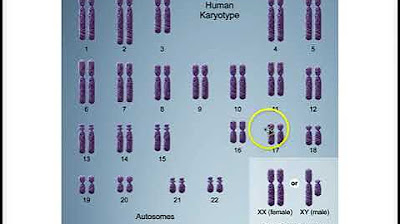C value paradox and C value enigma
Summary
TLDRThe video script delves into the concept of 'C value Paradox,' challenging the initial assumption that a more complex organism would have a larger genome. It explains how this theory was debunked with the discovery of organisms like salamanders, which have a larger genome than humans but are less complex. The script also touches on the 'C value Enigma,' highlighting the ongoing mystery that neither total nor haploid genome content can predict an organism's complexity, as exemplified by the comparison between humans, frogs, and salamanders.
Takeaways
- 🌐 The C value Paradox refers to the unexpected relationship between an organism's complexity and its DNA content.
- 📚 The concept originated in 1948, with the initial belief that more complex organisms would have larger genomes.
- 🔍 It was thought that eukaryotic organisms, being more complex, would have more complicated and larger genomes compared to prokaryotic organisms.
- 🧬 Contrary to early assumptions, studies have shown that genome size does not necessarily correlate with an organism's complexity.
- 🐸 An example given is the salamander, which has a larger genome than humans but is less complex.
- 🤔 The C value Enigma emerged as an updated term, questioning whether even considering the haploid genome content could predict an organism's complexity.
- 🔎 Despite focusing on haploid genome content, the paradox remains as some less complex organisms have more haploid genomic content than more complex ones.
- 🌱 The comparison between plants, frogs, and humans illustrates the inconsistency between complexity and genetic content.
- 🧬 Humans, despite being more complex, do not have a larger number of genes compared to some less complex organisms like salamanders.
- 💡 The C value Paradox highlights that the number of genes or genome size is not a reliable indicator of an organism's evolutionary advancement or complexity.
- 🔮 The paradox remains unsolved, indicating ongoing scientific inquiry into the relationship between genome size and organism complexity.
Q & A
What is the C value Paradox?
-The C value Paradox refers to the observation that the complexity of an organism does not necessarily correlate with the size of its genome, contradicting the early assumption that more complex organisms would have larger genomes.
What does the term 'C value' stand for in the context of the paradox?
-In the C value Paradox, 'C' stands for 'complexity' and refers to the amount of DNA in a genome, not the complexity of the organism itself.
When was the concept of the C value Paradox first introduced?
-The concept of the C value Paradox originated in 1948, when scientists began to study the relationship between the complexity of organisms and their genetic content.
What is the difference between eukaryotic and prokaryotic organisms in terms of complexity?
-Eukaryotic organisms are generally considered more complex due to their more intricate cellular structure compared to prokaryotic organisms, which are simpler in structure.
Why did scientists initially believe there would be a direct correlation between organism complexity and genome size?
-Scientists initially thought that a more complex organism would require a more complex genetic code, leading to a larger genome size, based on observations of the differences between eukaryotic and prokaryotic organisms.
What is the C value Enigma, and how does it relate to the C value Paradox?
-The C value Enigma is a term that came after the C value Paradox, indicating an updated perspective on the issue. It still questions the relationship between genome size and organism complexity, focusing on the haploid genome content rather than the entire genome.
What is the significance of the salamander in the context of the C value Paradox?
-The salamander is used as an example in the script to illustrate the paradox because, despite being less complex than humans, it has a larger genome size.
How does the C value Paradox challenge our understanding of evolution?
-The C value Paradox challenges the assumption that a larger genome size is indicative of higher complexity or a more evolved state, as some less complex organisms have larger genomes than more complex ones.
What is the current understanding of the relationship between genome size and organism complexity?
-The current understanding, as highlighted by the C value Paradox, is that there is no direct or predictable relationship between genome size and the complexity of an organism.
Why is the C value Paradox still considered an enigma?
-The C value Enigma persists because, despite advances in genetic research, scientists have not yet found a definitive explanation for why there is such a discrepancy between genome size and organism complexity.
How might the C value Paradox affect the study of genomics and evolution?
-The C value Paradox suggests that researchers cannot rely solely on genome size as an indicator of evolutionary progress or complexity, necessitating a more nuanced approach to studying genomics and evolution.
Outlines

This section is available to paid users only. Please upgrade to access this part.
Upgrade NowMindmap

This section is available to paid users only. Please upgrade to access this part.
Upgrade NowKeywords

This section is available to paid users only. Please upgrade to access this part.
Upgrade NowHighlights

This section is available to paid users only. Please upgrade to access this part.
Upgrade NowTranscripts

This section is available to paid users only. Please upgrade to access this part.
Upgrade Now5.0 / 5 (0 votes)





